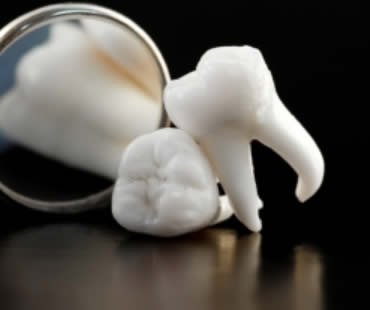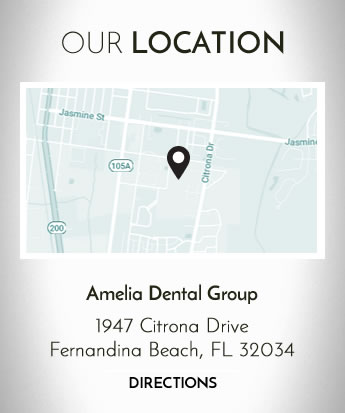
The goal of root canal therapy is to relieve pain, not cause it. The pain you experience before a root canal is the result of damage to the tissues in the tooth. Root canal therapy removes that damaged tissue, therefore relieving the discomfort you feel. If you are still experiencing tooth pain after undergoing a root canal procedure, it could be an indication of a problem with the treatment.
While mild discomfort is to be expected during the root canal healing process, if the pain continues or becomes more severe, it is likely an indication of a problem. There are several reasons for tooth pain after root canal treatment:
- The tooth has an extra canal that was not cleaned and filled, meaning there is an extra physical root.
- The tooth has a small, tight accessory canal that is difficult to locate on x-rays or hard to access with the necessary tools.
- The tooth is fractured due to the damage and weakened state caused by the original decay and the access cavity that is created to begin the root canal treatment.
- The root canal has become reinfected.
- The small files used by your dentist to clean out the pulp of the tooth sometimes break, resulting in a failed root canal treatment.
In the days immediately following root canal therapy, it is normal to experience some tenderness of the tooth or surrounding gum. This discomfort should be easily managed with over-the-counter painkillers and should subside in a few days. If the pain does not ease in a few days or becomes more severe, contact your dental professional immediately to access your symptoms and determine if you are having root canal complications.
Our dental office is located in Fernandina Beach

Restoring missing teeth with dental implants is the latest and greatest technique to give you your smile back. It offers many benefits such as comfort, aesthetics, security, and easy maintenance. If you are missing any teeth and would like to learn more about getting dental implants, you need to find a qualified and experienced dental professional for the job. Here are some tips on doing so.
Training
Dentists or oral surgeons who perform dental implants should have training specifically in the procedure. Look for a professional with credentials like a dentistry degree from a reputable university, participation in continuing education programs, and membership in dental organizations.
Reviews
Look online for reviews of the dentist and practice, and be sure to ask friends and family for recommendations. Word of mouth is often the best way to find a healthcare professional.
Examples of work
Ask to see before-and-after pictures of dental implants performed by the dentist. Request to see cases similar to yours.
Technology
A quality dental office should have the latest advancements in technology and equipment so that you will receive the most up-to-date care. Look for equipment like digital X-rays, chair side screens, and dental lasers. Also inquire about sedation or anesthesia methods available in the office.
Convenience
The location of the office should factor into your decision as you choose a professional to perform your dental implant procedure, as well as the office hours and staff. You should feel confident in the care you’ll receive, and feel comfortable asking questions and receiving treatment. Implant treatment requires multiple visits, so choose a dentist who you don’t mind establishing a relationship with over time.
If you need a dentist in Fernandina Beach contact us today

Have you always disliked your smile? Did childhood school pictures find you smiling closed-lipped and tense? Did you spend your teens fearful of making personal connections? As you aged, did you find yourself facing more and more mounting oral difficulties? Dental problems are difficult enough to deal with when it’s just one or two cavities or a problem remembering to floss, but when you’re dealing with a lifetime of bad oral health, it can become so much more.
Often, those who need the most professional oral care are those who avoid it completely. Many have had negative experiences in the dental chair as children, or are fearful of the pain or process that is necessary to makeover a smile that’s been unattractive and unhealthy for most of the patient’s life. These patients sometimes avoid professional care because of shame and embarrassment, fearful that the dentist is going to judge them.
Smiles go bad for many, many reasons, some of which are completely out of the patient’s control. Poor nutrition growing up because of a lack of money or parental education can be a large factor. Some medicines, if taken during childhood, can cause adult teeth to degrade, and there are many genetic factors that can be passed on to a child that leads to extremely poor quality teeth. If this sounds like you, don’t let shame in your situation keep you from getting the smile you always wanted.
Find a skilled cosmetic dentist in Fernandina Beach and schedule a consultation. Nothing has to be done at this first meeting, it’s just talking to the dentist. If that dentist isn’t helpful and supportive, get up and walk out and find yourself another dentist. The majority of cosmetic dentists understand the backgrounds that can lead to poor oral care. It can have nothing to do with how much you brush or floss, but everything to do with your history.
You deserve to have the smile you’ve dreamed of all your life. Don’t let fear or shame hold you back. Work with your cosmetic dentist to make a plan, and take the first steps you need to completely makeover your smile!

A special area of dentistry has been formed that focuses on making your smile as flawless and appealing as possible. Cosmetic dentistry corrects imperfections that cause people to feel insecure and unhappy with their smiles. If you are one of those people, maybe it’s time to see a cosmetic dentist to give you back your smile and confidence. Here are some of the most common reasons for visiting a cosmetic dentist.
One of the biggest complaints that people have about their smile is the color of their teeth. Stains can cause your teeth to become yellow or brown with time, making your smile unattractive and embarrassing. Cosmetic dentists offer teeth whitening techniques that brighten your teeth, and can restore your pearly whites in just one appointment.
Gaps in your smile from missing teeth not only look awkward, they also make chewing and speaking more difficult. A cosmetic dentist can replace your missing teeth with dental implants, bridges, or dentures. Implants have become increasingly popular because they provide a permanent, comfortable, and natural-looking solution for missing teeth.
Cosmetic dentists can solve a variety of other imperfections that make you unhappy with your smile. Veneers improve the shape and color of your teeth by covering the fronts of your teeth with thin shells. Dental fillings and root canals resolve problems often linked to tooth decay. Crowns are used to cover an unhealthy tooth and restore its strength, shape, size, and appearance. They also may be used in conjunction with dental bridges to correct gaps in your smile.
There is no reason to go through life ashamed of your teeth. Make an appointment with a cosmetic dentist to see how your smile can be improved to get the bright, beautiful smile you desire.
Contact us today to schedule your cosmetic dentistry consultation in our Fernandina Beach dental office.

Wisdom teeth are the third set of molars, and usually emerge in the late teens or early twenties. Standard dental practice is to remove wisdom teeth prior to them being fully formed when the roots have not yet had a chance to develop and fully root into the jaw. Younger patients usually have an easier recovery from surgery and many dentists believe early removal prevents future dental problems associated with wisdom teeth.
If your wisdom teeth were not removed as they emerged, there are some signs and symptoms that would indicate the need for extraction including:
- Wisdom teeth that are impacted, which means they have become trapped in the jawbone or gums.
- Wisdom teeth that are emerging at an awkward angle, causing pressure on adjacent teeth.
- Wisdom teeth that do not fit in your mouth, causing crowding of the surrounding teeth as well.
- Wisdom teeth that are suffering from decay or disease caused by the inability to keep them cleaned properly.
- Wisdom teeth that have developed fluid-filled cysts near the gumline.
- Wisdom teeth that are causing pain due to any of the above reasons.
The decision about whether or not to remove your wisdom teeth should be made in consultation with your dental professional. Your dentist or oral surgeon can assess the position and health of your wisdom teeth and make a recommendation for treatment.
If extraction is recommended, they may choose to extract one tooth or all four molars at once. Recovery from the outpatient procedure takes just a few days, and you will quickly be back to normal. Contact our dental office if you are experiencing any of these symptoms listed to determine if you should consider wisdom tooth removal to ensure your future good oral health.

Straight, white smiles are in high demand, and choosing who is going to perform your smile makeover is not a decision to be taken lightly. The American Dental Association does not include cosmetic dentistry as one of the eight specialties, meaning there are no legal restrictions against any dentist calling themselves a “cosmetic dentist.” Therefore, it is vital to the success of your treatment to do research and find the best cosmetic dentist to perform your smile makeover. When searching for a qualified cosmetic dentist, consider the following:
- Ask your potential dentist about their cosmetic studies. Beyond dental school, a trained cosmetic dentist should have taken postgraduate courses and training in the particular types of procedures you are seeking.
- Find out what organizations they belong to that focus solely on cosmetic dentistry. The American Academy of Cosmetic Dentistry is the most notable, and offers an accreditation program that includes extensive continuing education and rigorous testing to ensure outstanding skills. Dentists who complete this accreditation are considered to be the very best in their field.
- Ask to see “before and after” photos of patients they have treated for smile makeovers. It is important you like the style and quality of the work shown in the photos before moving forward with your chosen cosmetic dentist.
- Inquire about testimonials and reviews from patients who have been treated for cosmetic problems similar to yours. An internet search can also yield information and reviews from previous patients about the cosmetic dentist you are considering.
- Find out how long the cosmetic dentist has been practicing and which cosmetic dental procedures they most commonly perform.
- Ask about the technology in their office. Current dental technology is one way to determine the level of advanced care in a cosmetic dentistry practice.
- Is the dentist and office staff friendly, helpful, and knowledgeable?
Be sure you feel comfortable and confident with your choice of a cosmetic dentist before proceeding with a smile makeover. Making the best choice can mean enjoying years of a beautiful, bright smile.
If you need a dentist in Fernandina Beach contact us today







